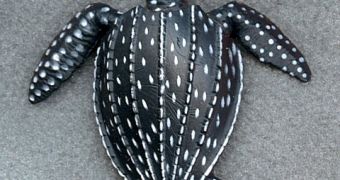Reports recently made public indicate that, as far as the leatherback turtles presently living in the eastern Pacific are concerned, this century might just be the very last one for the species.
Scientists from Drexel and Princeton University looked into how global warming is affecting both leatherback turtle eggs and hatchlings, and the conclusions they reached are quite alarming.
Thus, given the species rate of reproduction and the number of baby turtles that fail to hatch or die soon after as a result of extreme temperatures, it is to be expected that by 2100 their population will decrease by 75%.
As the researchers explain, increased global temperatures mean that the beaches where these turtles usually go to reproduce are now both hotter and drier than they used to be in the past.
Seeing how these animals bury their eggs in the sand, it is not difficult to guess how this impacts their population.
Moreover, warmer ocean waters take their toll on leatherback turtle hatchlings.
Last, but not least, changes in dynamics of oceanic temperatures might lead to other species, such as jellyfish, also becoming extinct.
This is to directly impact on the sea turtles population, as said species more often than not constitute their food source.
ScienceDaily explains that, as if these threats weren't enough, leatherback turtles sometimes have their nests destroyed by humans who wish to get a hold of their eggs, and quite often get caught in fishing nets.
One of the scientists involved in conducting this study explained how, “"In 1990, there were 1,500 turtles nesting on the Playa Grande beach. Now, there are 30 to 40 nesting females per season.”
Environmentalists warn that this species of turtles is already classified as an endangered one, and that unless conservation programs are implemented as soon as possible, the future looks rather grim for these marine creatures.

 14 DAY TRIAL //
14 DAY TRIAL //